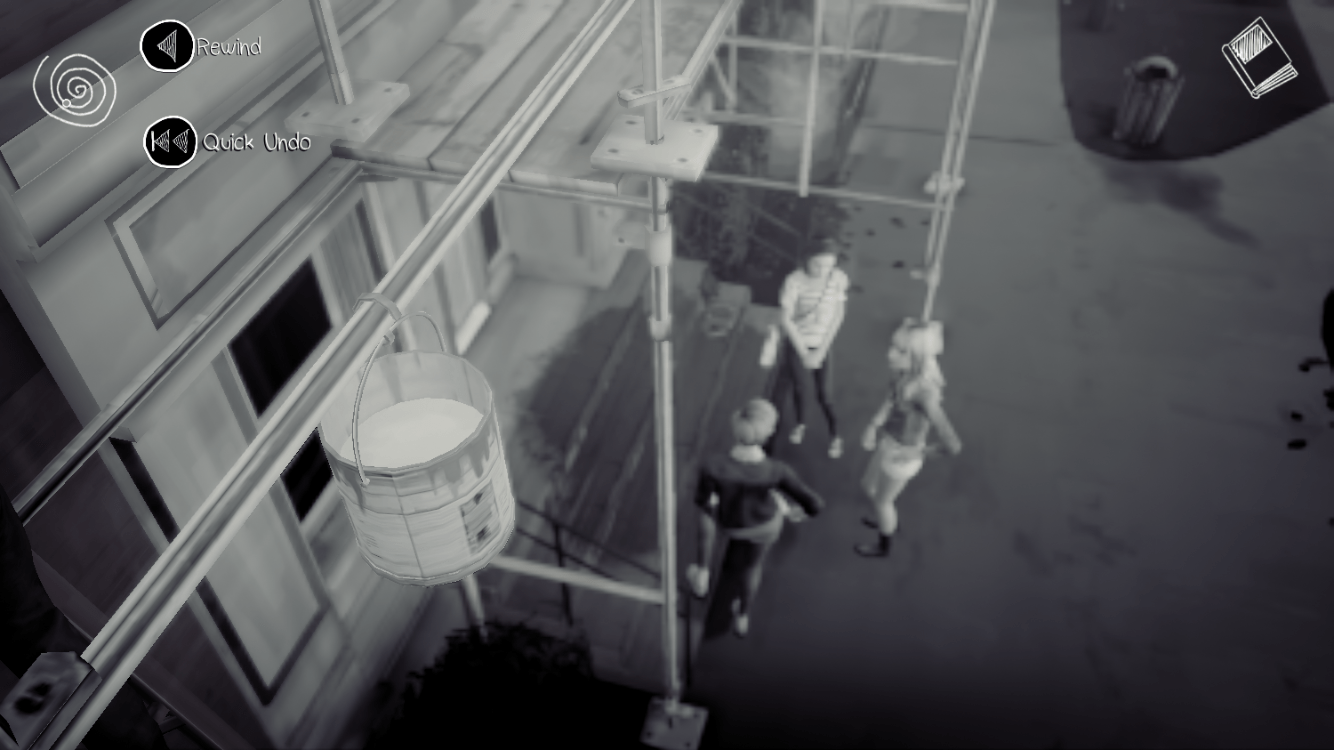Life is Strange is a mystery narrative game developed by Dontnod Entertainment and published in 2015 by Square Enix. It is playable on multiple platforms, including PlayStation 3, PlayStation 4, Windows, Xbox 360, Xbox One, OS X, Linux, iOS, Android, Google Stadia, and Nintendo Switch. I played the mobile version. The audience of this game is people 16 years of age and older, as it includes some violent and mature themes. The game follows the story of Max, a high school student with a newfound ability to rewind time. In this critical play, I argue that the use of environmental cues, interactive cut scenes, and rewinding time help weave narrative into the mystery surrounding.
In this game, there are a plethora of environmental cues that help clue players into both the narrative and mystery that is unfolding. In one of the first scenes, I was prompted with the ability to look at a number of items on my desk. One of these items included a journal. Through reading this journal, I learned more about the other characters in this game and Max’s relationship with them based on how she wrote about them. Furthermore, the text messages in this journal gave me a better sense of where Max was currently. In particular, texts from Max’s mom and dad revealed that it was her 18th birthday. However, some information provided more questions than answers. For example, throughout her high school, there were missing person posters of what I presume to be a student at their school. Therefore, while some environmental cues allowed me to learn more about where and who I was, others contributed to the mystery behind what was happening. In all, injecting information into the game environment, even when looking at a particular cue was not required, allowed me to learn more about the narrative. I found it to be an effective way to contribute to the world-building and architecture of this game, as well as provide players with agency.
As I played through the game, the narrative was also promoted through the different cut scenes that would get triggered after I completed specific actions. Cut scenes provided a useful mechanic of hearing player dialogue that helped facilitate the narrative and provide additional context to information gathered through environmental cues. For example, reading Max’s journal revealed her perception of another character as stuck up. This was confirmed through this character’s snobbish interactions with Max during the cut scenes. These cutscenes were also interactive in that they allowed you to choose how Max responded to others. While these options were limited (two to three choices), they provided hints as to how Max was thinking and her intentions. Even in moments where the dialogue choices were quite different (e.g., deciding whether or not to report another student for carrying a gun), it demonstrated to me the inner conflict she was feeling about the situation and what to do about it.
Finally, rewinding time provided a non-linear time element to the narrative of this mystery game. It provided loops to the game, where you could go back in time to try different actions to produce a different outcome. More information is gained on how to produce the correct outcome to progress in the game on each loop. Therefore, the player is given the ability to rewind time as much as needed to pick up on the necessary cues to achieve the right outcome. This helps facilitate narratives by providing a forcing function to make sure players can notice specific things relevant to the unfolding story. That said, sometimes that mechanic frustrated me as I got stuck in particular loops. Sometimes I had a hard time figuring out what I needed to do in order to make it to the next scene (such as in the image below). I think this could be improved by providing better hints to players.

Altogether, these player mechanics contribute to an embedded narrative in the game, where there is a pre-determined story that I, as a player, was learning as I was playing the game.


